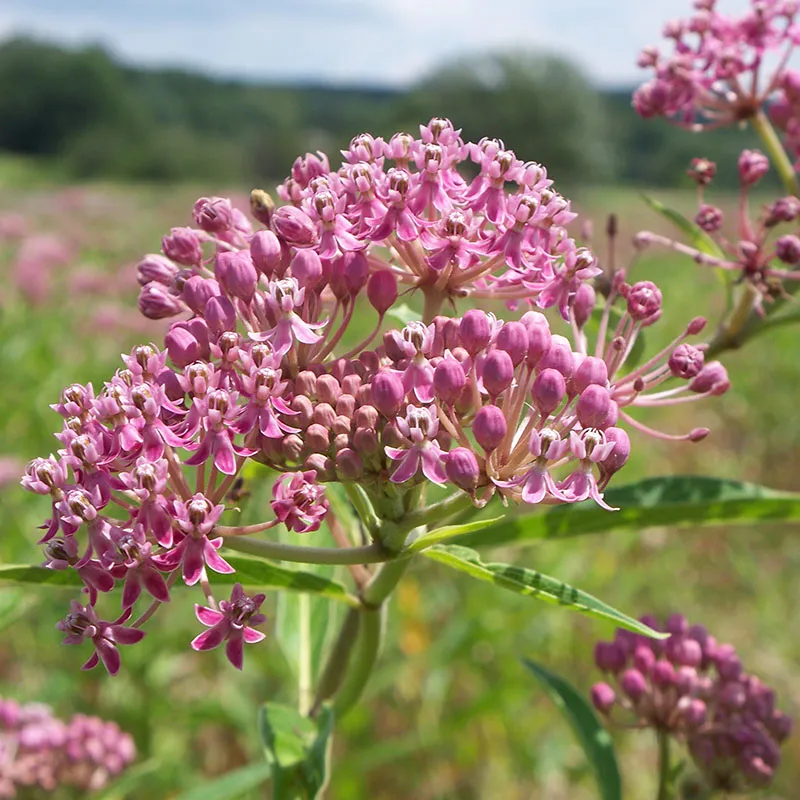If you have a low-lying, soggy spot in your yard where water tends to collect, don’t fight nature embrace it with a beautiful rain garden. A rain garden is a strategically designed planting area that captures runoff and helps it soak into the ground, reducing erosion and protecting local waterways. The secret lies in choosing plants that thrive in both wet and dry conditions. Here are 10 gorgeous plant species perfect for turning those problem areas into lush, eco-friendly wonders.
1. Blue Flag Iris (Iris versicolor)

The Blue Flag Iris is a standout for rain gardens with its striking violet-blue flowers and sword-shaped leaves. Native to North America, this perennial loves wet soil but can also tolerate drier spells, making it ideal for fluctuating moisture levels. Blooming in late spring to early summer, it adds vertical interest and a pop of color to your rain garden. The plant also helps filter water and attracts pollinators like bees and butterflies. Plant it in full sun to partial shade for best performance.
2. Swamp Milkweed (Asclepias incarnata)

A must-have for pollinator-friendly rain gardens, Swamp Milkweed produces clusters of pink or mauve flowers atop tall stems from mid to late summer. This native perennial thrives in consistently moist to wet soils and serves as a vital host plant for Monarch butterfly caterpillars. Its fragrant flowers also attract a variety of bees and beneficial insects. Swamp Milkweed is drought-tolerant once established, making it a resilient, low-maintenance choice for rain gardens in full sun to partial shade.
3. Cardinal Flower (Lobelia cardinalis)

The Cardinal Flower is famous for its dazzling scarlet blooms that appear in mid to late summer. Growing 2 to 4 feet tall, it thrives in wet, boggy soils and partial shade but can also tolerate some sun. Its tubular flowers are especially attractive to hummingbirds, adding dynamic movement and wildlife appeal to your rain garden. This native perennial prefers consistently moist soil but can handle short dry periods, making it a versatile choice for damp garden spots.
4. Joe Pye Weed (Eutrochium purpureum)

Joe Pye Weed is a towering, statuesque perennial perfect for large rain gardens. It features clusters of soft pinkish-purple flowers atop tall, sturdy stems that can reach up to 6 feet. This native plant thrives in moist to wet soil and is beloved by bees, butterflies, and other pollinators. Blooming from mid-summer into fall, it adds height, color, and texture to any rain garden setting. Plant it in full sun to partial shade for maximum flowering and healthy growth.
5. Goldenrod (Solidago spp.)

Often misunderstood as an allergen, Goldenrod is actually an insect-pollinated perennial that provides brilliant yellow blooms in late summer and fall. Native varieties like Showy Goldenrod (Solidago speciosa) thrive in rain gardens, tolerating both wet and dry spells. Its upright clusters of tiny golden flowers attract pollinators like bees, butterflies, and beneficial insects. Goldenrod adds a cheerful splash of color to damp areas while improving biodiversity and offering erosion control with its sturdy root system.
6. Switchgrass (Panicum virgatum)

Switchgrass is a tough, ornamental native grass perfect for rain gardens. With its upright, airy plumes and slender green leaves that turn golden or red in fall, this perennial adds texture, movement, and visual interest. Switchgrass thrives in moist to wet soil but tolerates drought, making it ideal for areas with variable moisture. It’s also valuable for controlling erosion and attracting birds, who feast on its seeds. Plant it in full sun for the best growth and dramatic effect.
7. Virginia Bluebells (Mertensia virginica)

Virginia Bluebells bring early spring color to rain gardens with their bell-shaped, sky-blue flowers. These native perennials prefer moist, rich soil and partial shade, thriving in rain gardens that hold water after spring rains. As summer arrives, they go dormant, making way for later-blooming plants. Their charming flowers attract early-season pollinators like bees and hummingbirds. Plant them beneath taller perennials or shrubs for a layered look and to take advantage of the soil’s moisture during their active growth period.
8. Sensitive Fern (Onoclea sensibilis)

Sensitive Fern is an attractive, easy-going fern species that loves wet, shady spots. Its bright green, deeply lobed fronds unfurl in spring, creating a lush, tropical feel in damp areas. It’s called “sensitive” because its fronds are easily damaged by frost, but in warm months, it’s resilient and hardy. Sensitive Fern thrives in moist to wet soil and spreads through rhizomes, making it ideal for stabilizing soil in rain gardens and along streambanks. It pairs beautifully with flowering perennials and native grasses.
9. Creeping Jenny (Lysimachia nummularia)

Creeping Jenny is a fast-growing, ground-hugging perennial known for its bright chartreuse foliage and small yellow flowers in summer. It thrives in moist, wet conditions and spreads quickly, making it ideal for filling in gaps around larger rain garden plants. Its trailing habit softens garden edges and creates a lush carpet of color. Creeping Jenny is especially valuable for erosion control and can handle occasional standing water. Plant it in full sun to partial shade for the most vibrant leaf color.
10. Blue-Eyed Grass (Sisyrinchium angustifolium)

Don’t let the name fool you Blue-Eyed Grass is actually a member of the iris family. This compact, clumping perennial produces slender, grass-like leaves and delicate star-shaped blue flowers with yellow centers in late spring and early summer. It thrives in moist to wet soils but tolerates brief dry spells. Blue-Eyed Grass adds subtle beauty and fine texture to rain gardens, particularly along edges and paths. It attracts pollinators and works well as a ground cover or filler plant.



